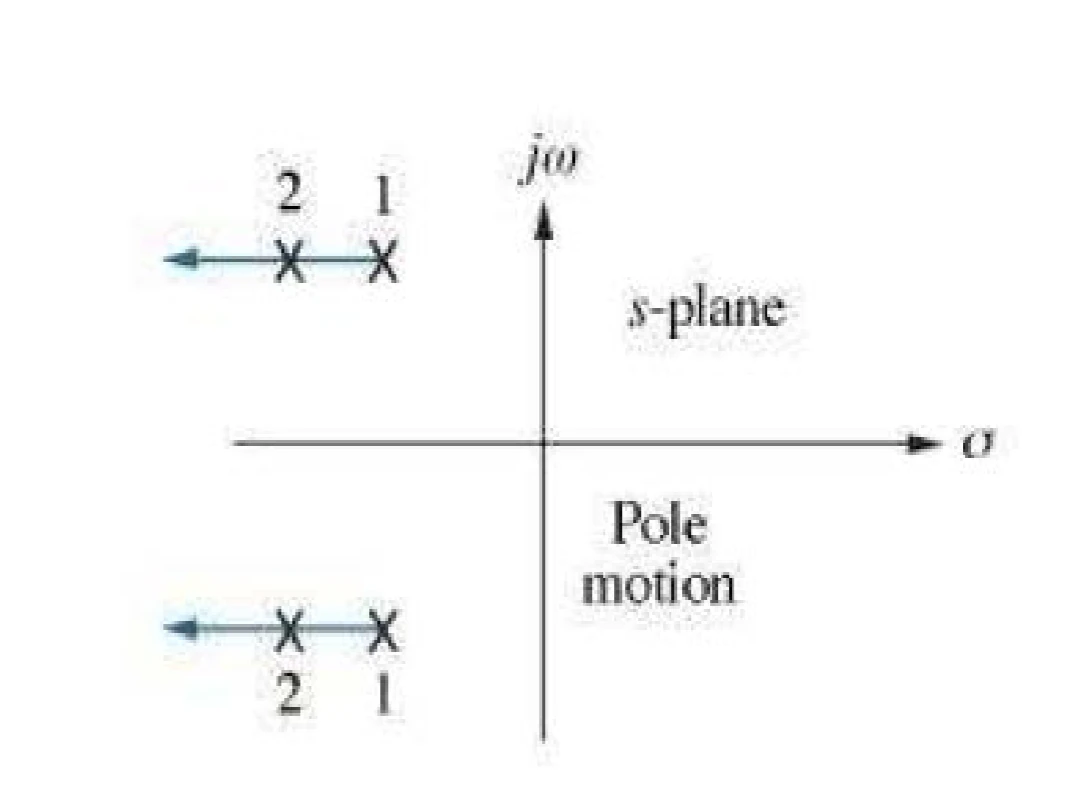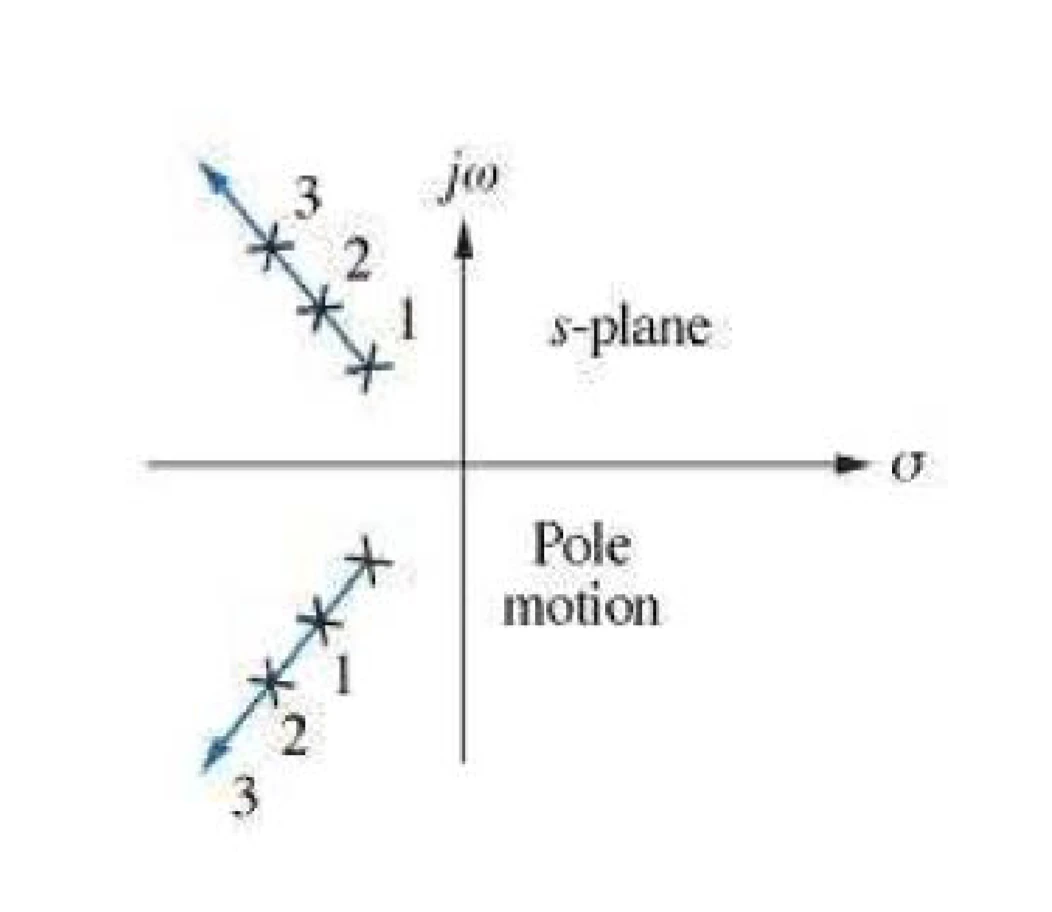System response
We will consider first-order and second-order system
first-order systems, time constant
source code
Output of a general first-order system is
Y(s)=X(s)G(s)=s(s+a)a
thus the time domain output is y(t)=1−e−at
usually, t=a1, and y(t)=0.63, hence 63.2% to find the rise time.
response in time domain
Tr, time for the waveform to go from 0.1 to 0.8 of its final value
for first order: Tr=a2.2
Ts, time for response to reach and stay with 2% of its final value
for first order: Ts=a4
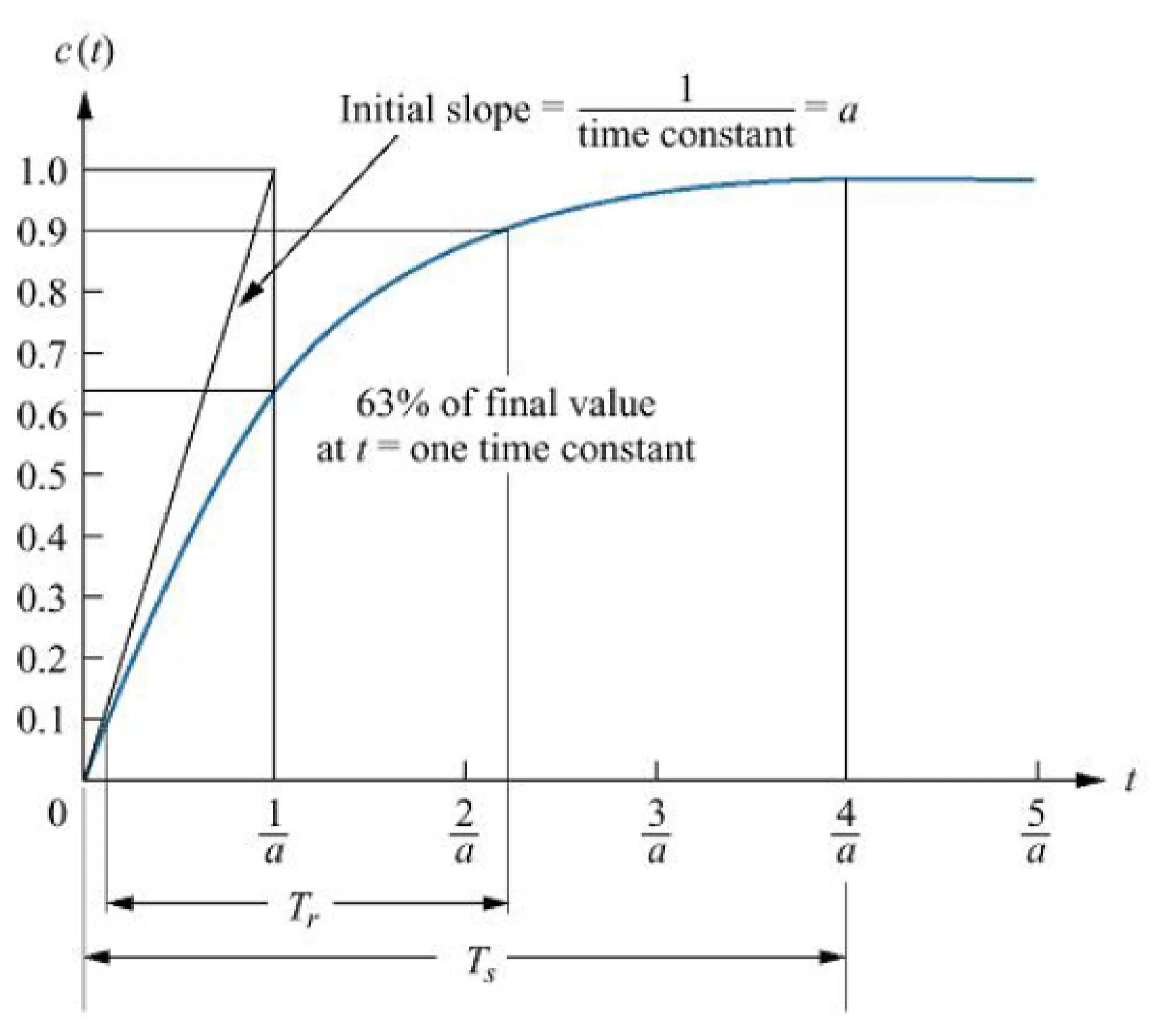
second-order systems
general order system:
G(s)=s2+as+bb
Thus the pole for this system:
s1,s2=2−a+a2−4b
natural frequency
happens when a=0
The transfer function is G(s)=s2+bb, and poles will only have imaginary ±jw
wn=b is the frequency of oscillation of this system.
in a sense, this is the undamped case:
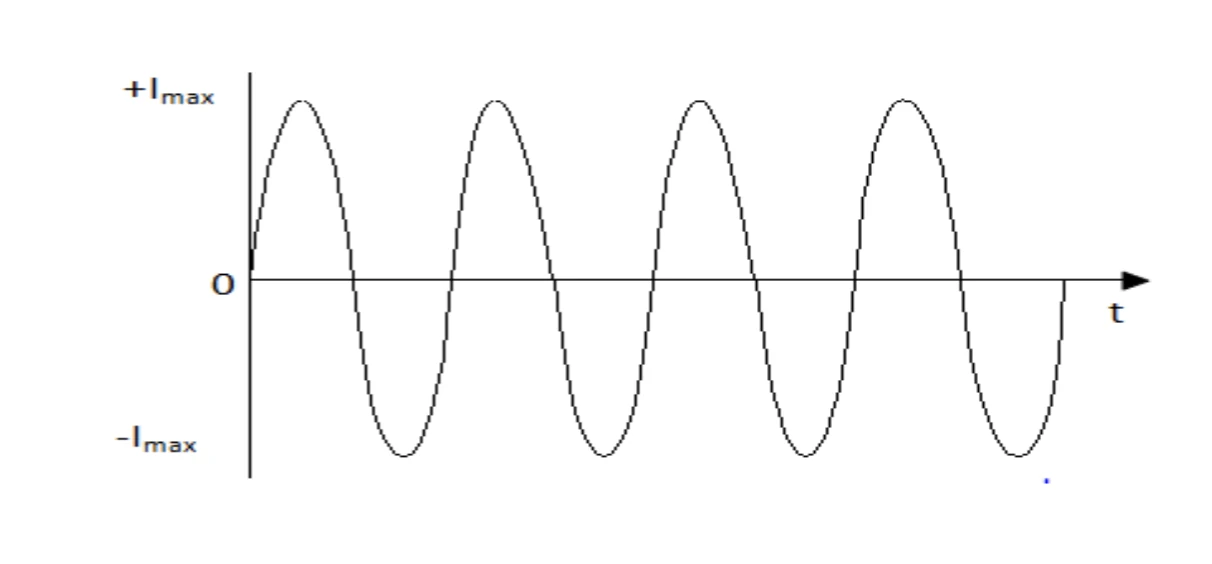
damping coefficient
complex poles has real part σ=−2a
damping ratio is defined as:
ζ=natural frequencyexponential decay frequency=wn∣σ∣
So that a=2ζwn
general second order
G(s)s1,s2=s2+2ζwns+wn2wn2=−ζwn±wnζ2−1
observations
| Condition | Poles | pole type | Damping Ratio (ζ) | Natural Response c(t) |
|---|
| Undamped | ±jωn | imaginary | ζ=0 | Acos(ωnt−φ) |
| Underdamped | ωd±jωd | complex | 0<ζ<1 | Ae(−σd)tcos(ωdt−φ) where wd=wn1−ζ2 |
| critically damped | σ1 | real | ζ=1 | Kteσ1t |
| overdamped | σ1σ2 | real | ζ>1 | K(eσ1t+eσ2t) |
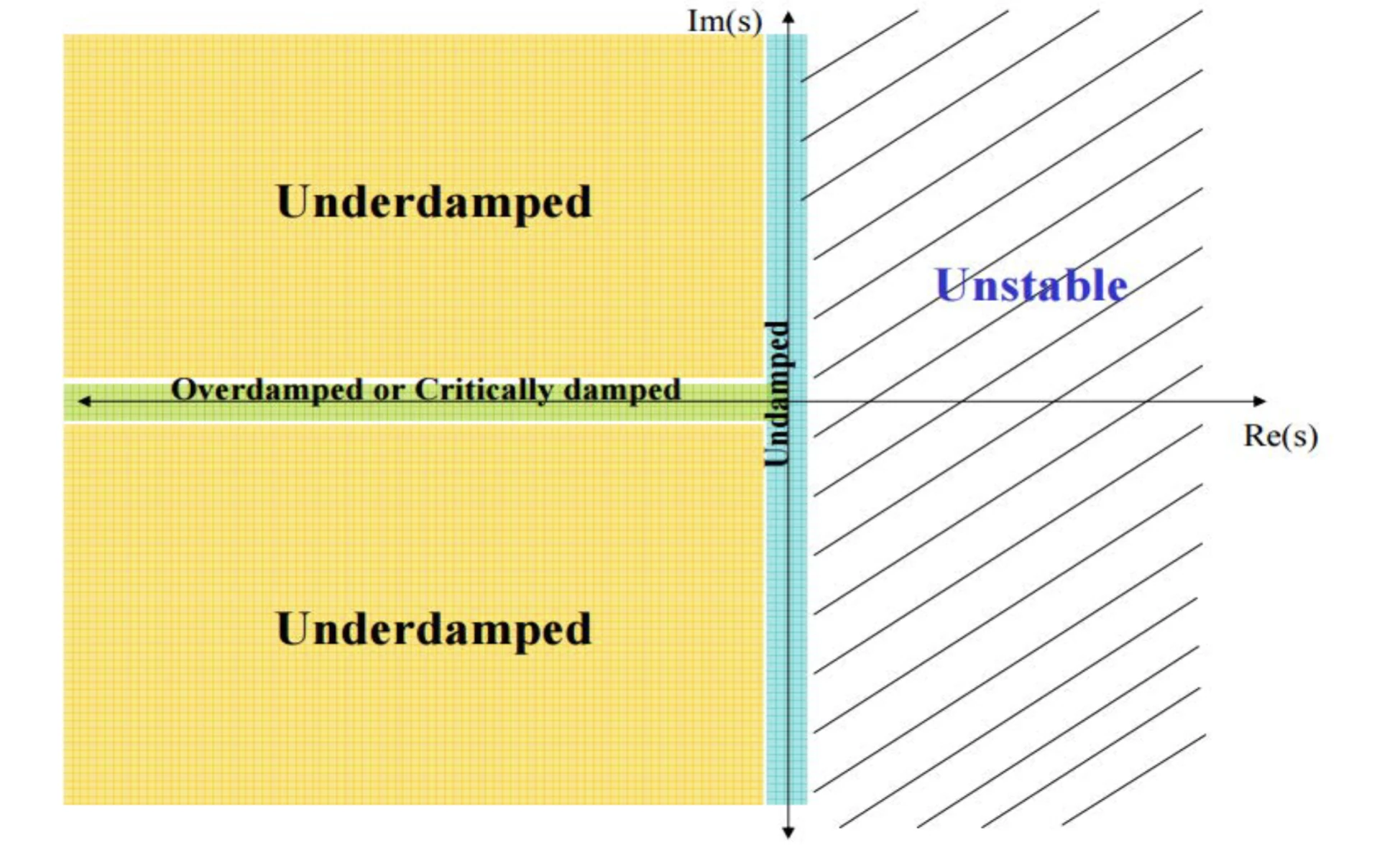
underdamped second-order step response
Transfer function C(s) is given by
C(s)=s(s2+2ζwns+wn2)wn2
response in time-domain via inverse Laplace transform:
c(t)=1−1−ζ21e−ζwntcos(1−ζ2ωnt+φ)
where φ=tan−1(1−ζ2ζ)
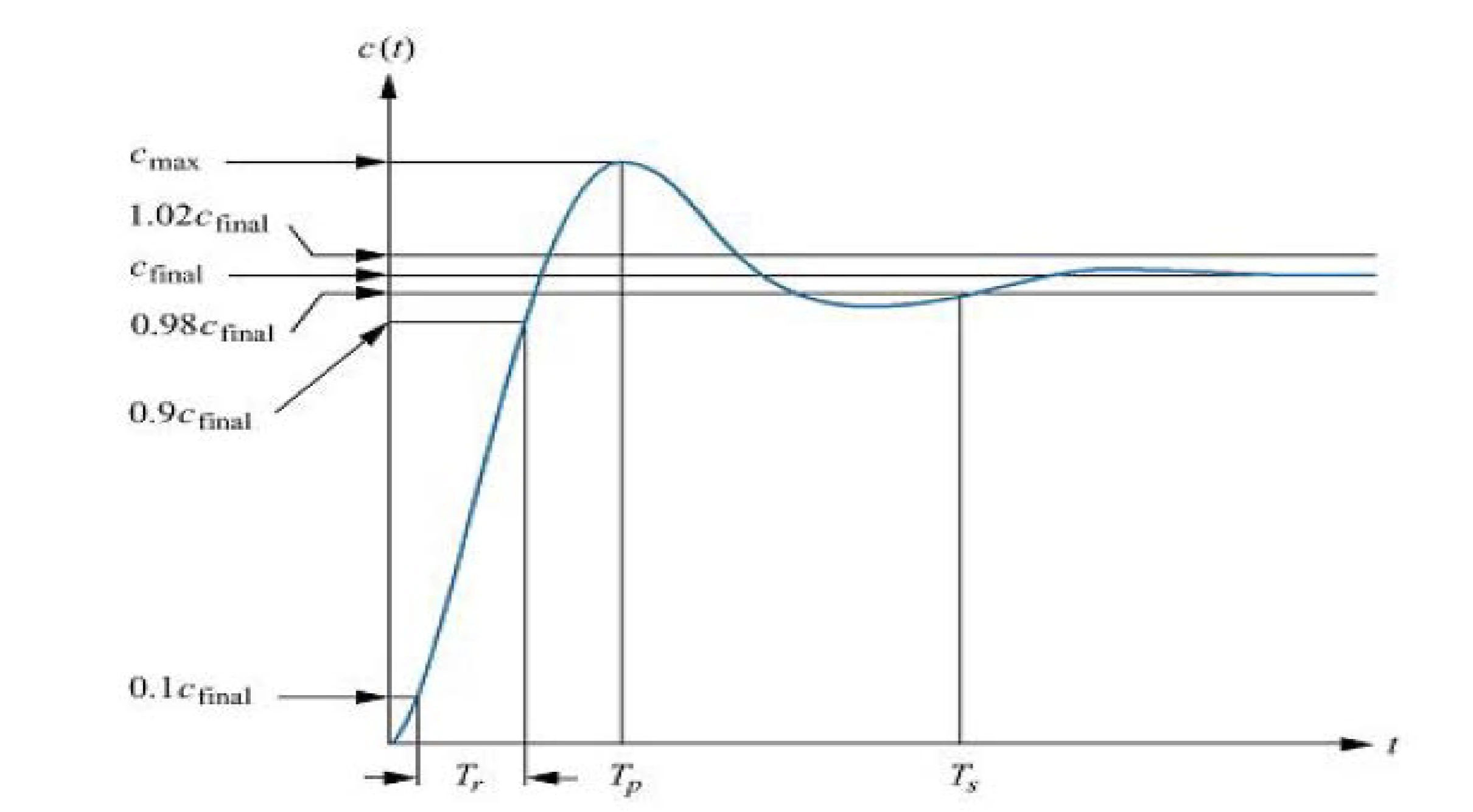
peak time Tp
time required to reach the first or maximum peak
Tp=ωn1−ζ2π
percent overshoot
%OS (percent overshoot)
%OS=eζπ/1−ζ2×100%
or in terms of damping ratio ζ:
ζ=π2+ln2(100%OS)−ln100%OS
relations to poles
G(s)s1,s2TpTs=s2+2ζwns+wn2wn2=−ζwn±wnζ2−1=ωn1−ζ2π≅ζωn4
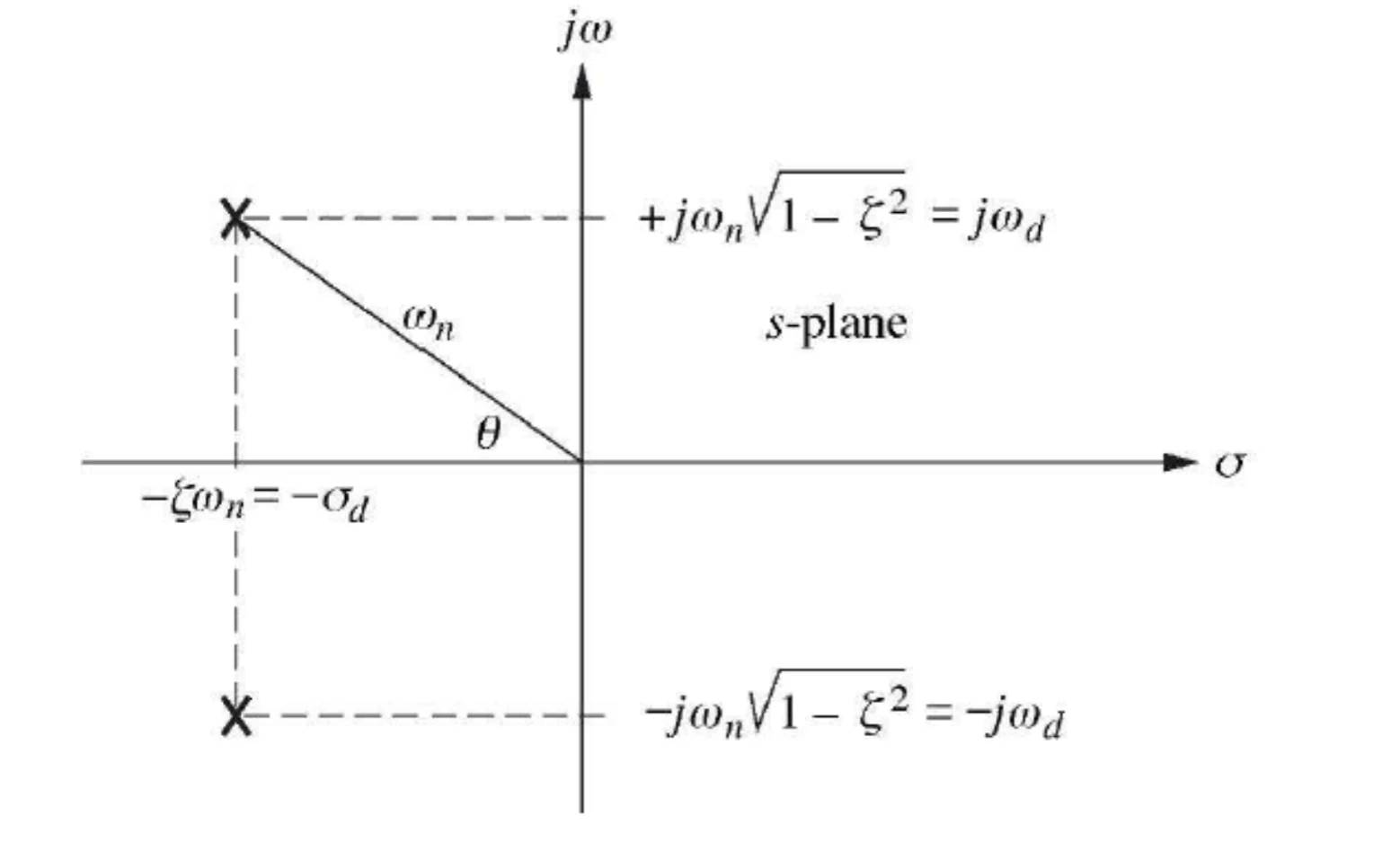 poles of second-order underdamped system
poles of second-order underdamped system
same envelope
source code
same frequency
source code
same overshoot
source code





